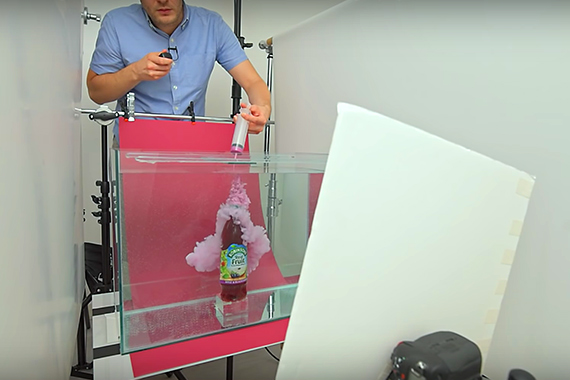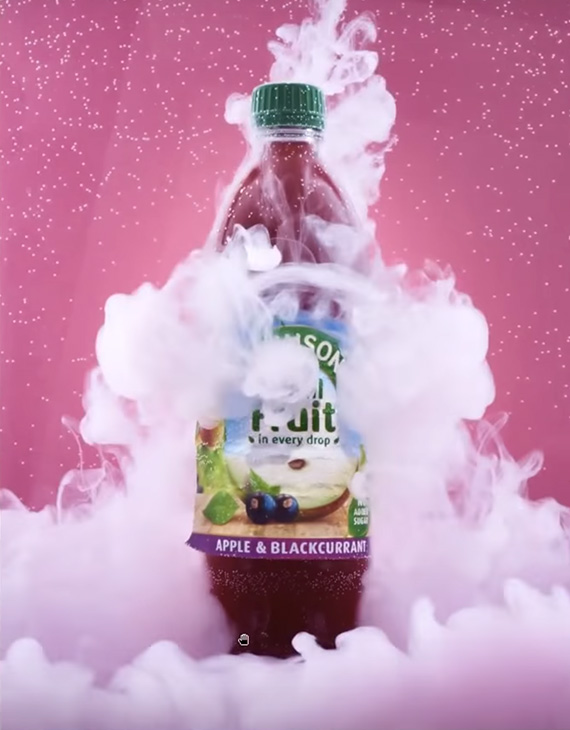You may be surprised by some of the creative techniques that photographers dream up to get a stand-out shot. In the following short, artist Max Bridge shows off an aqueous technique that he’s perfected to bring a supernatural feel to even the most banal subject matter:
You may have seen this effect pulled off in films like Close Encounters of the Third Kind or Indiana Jones. Cinematographers use what’s called a “cloud tank” to create the liquid-smoke hybrid. But you don’t have to have a multi-million dollar budget to recreate this look. With just a few tools, you can make aqueous photos of your own within the confines of a home studio.
Materials Needed for Aqueous Photography
- A small or medium sized fish tank. The size of the tank used depends on the product being photographed. You’ll want something that’s large enough to completely submerge the product in question. However, super-sized tanks can be unruly to handle effectively. Bridge uses a 60x30x40 centimeter tank to accomplish this particular tutorial.
- Water. You’ll want enough to completely fill the fish tank.
- Evaporated milk. The milk is the cloud-making agent. Alternatively, ink or paint can be used to create “clouds”. Different materials react differently when suspended in water, so it’s best to experiment to find the look that you want.
- A syringe. The syringe is the vessel that transfers the “cloud” into the water. Keep in mind that the size of the nozzle opening will directly impact the appearance of the cloud.
- Food coloring (optional).
- A hot glue gun. The glue holds down the product that you’re photographing to the bottom of the tank. When you’re finished, isopropanol can remove the hot glue.
- Remote trigger. Since you’ll be injecting the cloud into the tank, you’ll need a trigger in order to set off the camera and lights.
Technique
Once you have your materials gathered, the rest is open to interpretation. There’s no specific lighting necessary for the technique so long as everything is properly exposed (but if you need a bit of guidance, here are a few tips on how to go about setting up.) Likewise, there’s no one right or wrong way to go about making your clouds. It’s all a matter of taste, entirely dependent on your artistic goals.
The only thing that is crucial in the process is that you keep taking pictures as the milk/paint/ink/whatever tries to reach equilibrium. There’s no calculating exactly how the liquids will interact, and any moment could prove to be picture perfect. What’s more, having a series of images is extremely beneficial for compositing in post. With a number of exposures, it becomes possible to pick and choose different shapes and elements to create the best final image possible.
As technical as photography can be as a medium, the photographs that stand out most require a bit of imagination in order to execute. The final thing to keep in mind when creating a cloud tank of your own is to not overthink the process. Embrace the relative chaos of this process and play around with your tools. If you go into a shoot willing to embrace whatever results the photography gods are willing to serve, you’ll come out of the process with delightfully satisfying results.
Like This Article?
Don't Miss The Next One!
Join over 100,000 photographers of all experience levels who receive our free photography tips and articles to stay current:








Leave a Reply